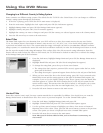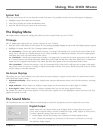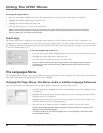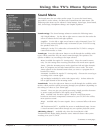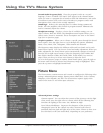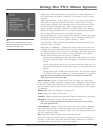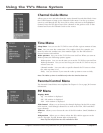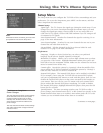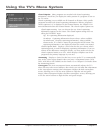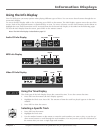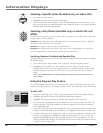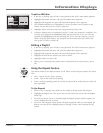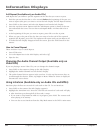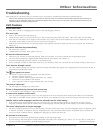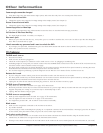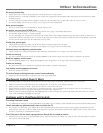
Graphics contained within this publication are for representation only.
48 Chapter 6
Using the TV’s Menu System
Closed Caption Many programs are encoded with closed-captioning
information, which lets you display the audio portion of a program as text on
the TV screen.
Closed captioning is not available on all channels at all times. Only specic
programs encoded with closed-captioning information. When a program is
closed captioned, CC is displayed in the channel banner. See Chapter 4 for
more information about the channel banner. The closed caption options are:
Closed caption setting Lets you choose the way closed captioning
information appears on the screen. The Closed caption setting does not
effect the DVI-HDTV input.
Off No captioning information displayed.
On always Captioning information shown always, when available.
On when mute Displays captioning information, when available,
whenever the TV’s sound is muted by pressing the MUTE button. The
captioning information is not displayed when the sound is not muted.
Closed-Caption Mode Displays a choice list that lets you choose which
captioning mode is used for displaying captioning information. If you are
unsure of the differences among the modes, you may prefer to leave the
closed captioned mode set to CC1, which displays complete text of the
program in the primary language in your area.
Autotuning Displays a choice list that lets you set up the TV to automatically
tune to the correct input channel when you press a component button (VCR,
DVD, AUX/HD or SAT/CABLE) on the remote. Go to Chapter 4 for details about
the Autotuning feature.
Convergence The Auto convergence feature automatically adjusts the TV’s
tubes (this may take several minutes, after which you can make ne adjustments
to the convergence settings); Red convergence displays the Red convergence
screen, allowing you to use the arrow buttons to align the red and green
images; Blue convergence displays the Blue convergence screen, allowing you
to use the arrow buttons to align the blue and green images.



